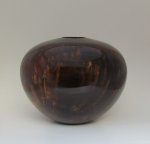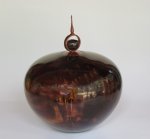Stephen Bellinger
Member
- Messages
- 3,131
Or anyone else that can help me out with really glossy pics. This piece is super glossy and i can't seem to get a good pic no matter how many times i try. Don't have a really good set up so not sure what to do. I have a decent camera as it's a Canon Power Shot sx30is. Not real sure how to use all the features. So if anyone can help a dumb hillbilly i'm all ears. Any way here's the pics i'm trying to get better.
Aprox 7 1/2x 9 1/2, black gum burl. died using Black then sanded back, then a mix of black,yellow, and red ,mixed in a jar,then after that dried, about 10 coats of lacquar. Finial is from some wood my brother gave me that he got when he lived in the bahamas. The small HF in the finial is the same as the big one.
Thanks for any SIMPLE help ya can give me. Remember i need the hillbilly way.

![030 [800x600].JPG 030 [800x600].JPG](https://familywoodworking.org/forums/data/attachments/62/62609-666838c82f734e99f8dd4233f0fbfa94.jpg)
![027 [800x600].JPG 027 [800x600].JPG](https://familywoodworking.org/forums/data/attachments/62/62610-30f77b1c77dcf08e9ec3ac664f39238a.jpg)
![021 [800x600].JPG 021 [800x600].JPG](https://familywoodworking.org/forums/data/attachments/62/62611-083831252155bd38dca56c08653e482e.jpg)
Aprox 7 1/2x 9 1/2, black gum burl. died using Black then sanded back, then a mix of black,yellow, and red ,mixed in a jar,then after that dried, about 10 coats of lacquar. Finial is from some wood my brother gave me that he got when he lived in the bahamas. The small HF in the finial is the same as the big one.
Thanks for any SIMPLE help ya can give me. Remember i need the hillbilly way.

![030 [800x600].JPG 030 [800x600].JPG](https://familywoodworking.org/forums/data/attachments/62/62609-666838c82f734e99f8dd4233f0fbfa94.jpg)
![027 [800x600].JPG 027 [800x600].JPG](https://familywoodworking.org/forums/data/attachments/62/62610-30f77b1c77dcf08e9ec3ac664f39238a.jpg)
![021 [800x600].JPG 021 [800x600].JPG](https://familywoodworking.org/forums/data/attachments/62/62611-083831252155bd38dca56c08653e482e.jpg)



